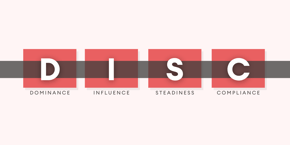In this final part of our series of three articles concentrating on M&A, we focus on how to maximize your company valuation.
Distributors across the US are hot M&A targets right now, but how businesses position themselves for sale and underline their technology and other key credentials can have a significant impact on both their company valuation and the likelihood of an approach. Here’s why.
A seller’s market
The multiple challenges of operating in a pandemic have prompted many business owners across the US distribution space to seriously re-evaluate their exit plans and retirement goals. Those who were able to swiftly diversify into new markets and have subsequently reaped the rewards may feel that now is the time to pursue an exit strategy from a solid foundation. For many others, who have had to curtail operations, slim down sales teams, and suffer reduced revenues, putting their business on the market now may be the only realistic option.
Either way, companies with cash reserves are on the acquisition trail, including a number of highly active private equity-backed businesses. Prime targets will have their choice of suitors, and this presents an opportunity for all businesses in this space to present themselves in the best light to secure premium valuations and an increased likelihood of multiple approaches.
Key factors in sealing the deal
Of course, there is rarely one single ingredient that motivates a buyer to proceed with a potential acquisition, with multiple factors always at play in any negotiation. Naturally, any business that can provide robust, substantiated, quantitative, and qualitative financial forecasting which indicates strong future results will always stand out as a strong prospect, but there are several other highly-sought-after attributes sellers should look to amplify, including:
- Strong management and sound strategy
- A well-balanced portfolio of quality products and services
- Robust operating systems and processes
- Strong technology foundation and provision
- A management team that is geared up for sale
Individual businesses will have different strengths in all of these areas, and a perceived weakness in one needn’t necessarily preclude a deal, but regardless of their unique attributes, buyers will be looking for prospects to clearly and concisely articulate their overall credentials to demonstrate they make a compelling target. So, where can businesses actively looking for the exit turn their attention to increase their deal worthiness?
How data can make the difference
Whereas until relatively recently, IT could often be viewed as a cost to be managed and controlled whenever two organizations came together, in 2021, IT and digital capabilities can be a driving force behind a transaction. Indeed, as researchers from McKinsey point out, “Even when an acquisition centers around a company’s other attractive assets, digital capabilities can provide a significant source of additional deal value, particularly for legacy companies still struggling to catch up to digital natives and the more technologically advanced and entrenched players in their respective markets.”
The pandemic has rapidly accelerated technology uptake among organizations across the wholesale distribution space, so it makes sense that buyers increasingly prize data and technology-enabled businesses when comparing alternatives. The ability to demonstrate a data-driven approach can bring immediate clarity to a prospect’s credentials, making due diligence efforts easier as buyers are able to reach swifter conclusions regarding key business fundamentals, such as customer relationships and how quickly these could be assimilated into the wider organization.
Specifically, sales enablement software like sales-i can be a significant valuation driver in transactions. Demonstrating that your business has valuable data assets, which can be easily and swiftly integrated into an acquiring company can be a real differentiator when comparing investment prospects. Potential buyers will be especially drawn to targets who can clearly demonstrate they possess solid data on their accounts, such as key purchasing behaviors and insights on decision-makers. What’s more, for those businesses who are preparing to list for sale over the medium term, specifying sales enablement software in advance is a powerful way of ensuring your sales reps are pushing the right products to maximize improved bottom-line profitability, which can be one of the strongest drivers of an enhanced valuation.
The year of the deal
2021 promises to be a highly uncertain year for wholesale distribution businesses on many fronts as the fallout from the pandemic continues. This uncertainty is doing little to quell the appetites of acquisitive businesses that remain firmly in the market for the right targets. For sellers who are looking for a quick market exit as well as those businesses preparing for sale over the medium term, that means putting their best feet forward and amplifying their winning credentials. In today’s data-driven world, those that are able to demonstrate technology is robustly embedded throughout their organization are increasingly likely to receive an approach from a buyer and are well-placed to command particularly favorable valuations.
Not yet read the first two installments of our mergers and acquisition series?
Catch up now:
Part one - Distributors, is your sales data deal ready for the coming M&A wave?
Part two - How sales enablement software can create post-deal value for company buyers.



